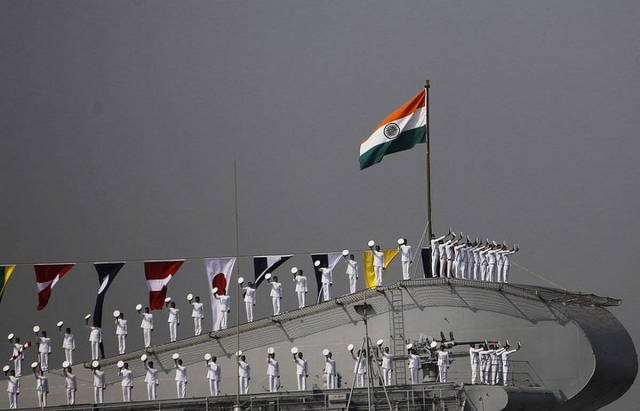The growth and spread of China's influence increasingly affects the interests of its neighboring states. In particular, India sees for itself more and more harassment and restrictions in the Chinese economic and military presence in the Indian Ocean. The changed geopolitical realities are reflected in the new maritime strategy, which will serve as an impetus for the adequate development of the Indian Navy.
Your attention is invited to become the "Naval Strategy of India. Adaptation to the challenges of the future", published in the journal "MarineForum". The author Hans Dieter EPP (Heinz Dieter JOPP), a former officer of the German Navy, a military analyst, examines the conditions prevailing in the Indian Ocean region and the resulting provisions of India's maritime strategy. Gives an assessment of the likely problems facing the Indian military-political leadership on the way to maintaining positions in the region.
The translation of the article preserves the style of the author. The changes made are due to the requirements of search engine optimization. The illustrations are selected by InVoen Info.
In his preface to the adapted maritime strategy, entitled "Ensuring the security of the Seas: Indian Maritime Security Strategy" (Ensuring Secure Seas: Indian Maritime Security Strategy) from October 2015, the Commander of the Indian Navy, Admiral Robin K. DHOWAN (Robin K. DHOWAN) wrote that the new strategy should adapt to the geopolitical and geostrategic changes of recent years. Among the most important changes, he considered the shift of focus from the Euro-Atlantic to the Indo-Pacific region, the increase in non-traditional dangers and the realization that maritime security is a key condition for India's national security and international activity.
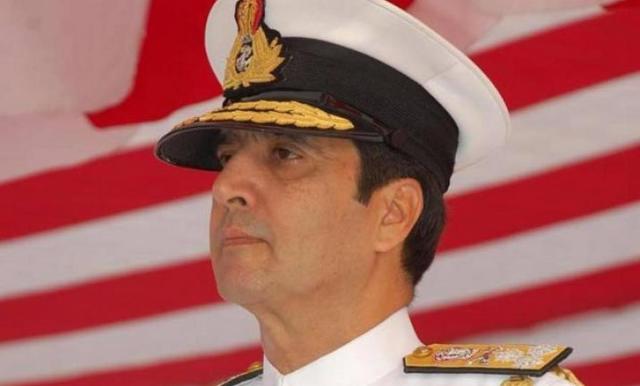
Admiral Robin K. DHOVAN The new strategy was strongly influenced by the publication in 2015 of China's Military Strategy.
Among other things, it says: "China needs to develop a modern navy ... and turn itself into a maritime power." Since China proceeds from the need to develop the navies of two oceans (Pacific and Indian) to better protect its maritime communications, it is obvious for India to urgently develop a coherent strategy for the Indian Ocean. Such a strategy will allow it to successfully use the available means (naval warfare) and diplomacy to achieve its strategic goals.
Such goals are analyzed in eight chapters and described with suggestions for achieving them. The first two chapters are devoted to the challenges and prospects of the maritime security strategy. They are followed by considerations of threat and conflict, from which goals are derived for their own successful strategy, including ensuring the security of the coast and marine areas.
The last chapters are devoted to the reasoning and requirements for the reform of the Indian Navy, as well as the development of their future capabilities. This applies to the underwater and surface components, as well as the management of the war at sea from the air and from outer space. Political demands for the most comprehensive production of naval weapons in the national competence hover over all these goals. What does this mean in detail?
Strategic awareness of the maritime expanse For decades, India has proceeded from the fact that the Indian Ocean belongs exclusively to its sphere of influence.
Later, with the participation of the Chinese People's Navy (PLA Navy, People's Liberation Army of China) in the fight against piracy in the Horn of Africa, it became clear that China was extending its influence to the Indian Ocean, the Arabian Sea and its coastal states. Only recently has India realized that China's " Maritime Silk Road " is not just an economic project to promote international trade. It guarantees the rights to use port facilities and the provision of Chinese warships away from national bases.
To this were added disputes with foreign fishing fleets in their own coastal waters and terrorist attacks off the coast of Mumbai. This justifies the requirement of the strategy on the need for a comprehensive picture of the situation regarding its own, hostile and neutral shipping on, under and through the sea. It should appear, among other things, thanks to interaction with friendly naval forces.
But it is at this point that the leadership and the Indian Navy have a fundamental problem. A comprehensive picture of the situation involves the exchange of data with friendly naval forces in the form of a two-way street and, thus, the transfer of intelligence results obtained by national means. Here the process of rethinking has just begun. However, the first agreements with the United States (military) and the Seychelles have already been concluded.
While control of our own territorial waters is politically accessible and feasible, creating a picture of the situation in the Indian Ocean is defined as a strategic challenge of the first order. At the same time, future relations with China and its ever-growing presence at sea and on land are taken into account.
So, for India, the visit of Chinese submarines to two ports in Colombo (Sri Lanka) in 2014 was unexpected, as was the visit of the Chinese SSN in Karachi in 2016. This presence only made the need to ensure the safety of sea lines tougher. China's growing interest in permanent residence and dominance in the Indian Ocean is supported by the construction of its own logistics capacity in Djibouti, the rights to ports in Gwadar (Pakistan) and Hambantota (Sri Lanka), as well as agreements with East African countries and the Maldives.
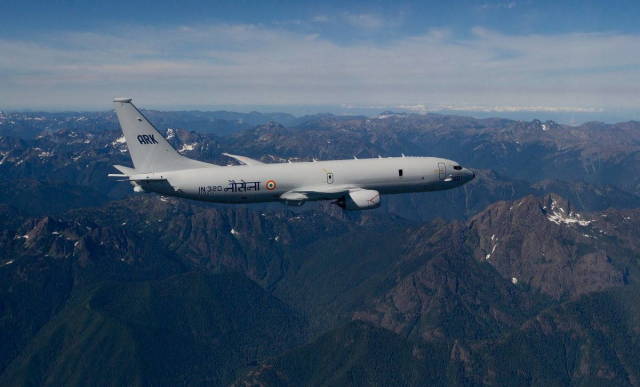
Taking into account the events in the South China Sea and the construction of artificial islands that are currently being used by China for military purposes, India would like to prevent such a development in the Indian Ocean.
In this regard, it purchased anti-submarine aircraft of the basic patrol aircraft type P-8I "Neptune" from the United States. They will be stationed on the Andaman and Nicobar Islands to be able to monitor the routes in the Strait of Malacca.
The next step is to strengthen cooperation in the Indian Ocean between the Indian and Japanese Navies. Seeking cooperation with medium-sized rather than great powers also serves India's purposes. In this regard, Indonesia and Vietnam are the same candidates as Australia.
Threats and possible conflicts India has rejected joining the Treaty on the Non-Proliferation of Nuclear Weapons since the beginning of its nuclear research.
She has always emphasized her strategic independence. Today, it defends the position of minimal nuclear deterrence exclusively against nuclear-weapon States. To increase confidence and strengthen survivability, India has begun to deploy its nuclear component, primarily on medium-sized strategic submarines (SSBNs). These systems are consistently withdrawn from the conventional forces. The Arihant SSB The main task of the armed forces and, consequently, the Indian Navy remains conventional (non-nuclear) deterrence.
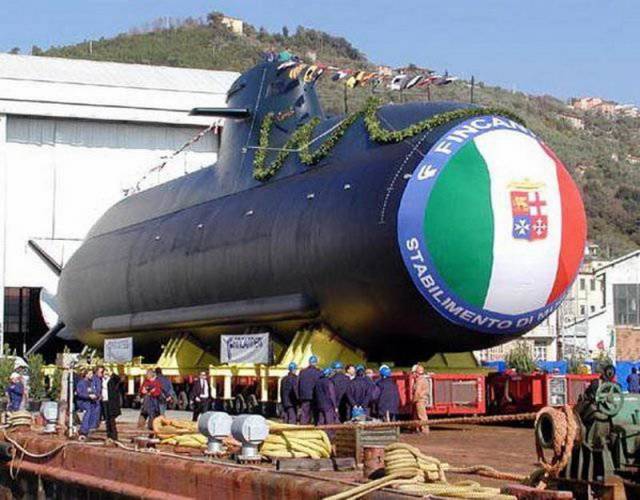
The maritime awareness described above is a prerequisite for the design of the fleet and its deployment. It will also strengthen cooperation with the Coast Guard, the Air Force, state maritime institutions and intelligence elements. From the Indian point of view, the elements of traditional deterrence are the constant readiness of weapons platforms, their presence in the Indian and increasingly in the western Pacific. Although there is no evidence of a possible enemy in a naval conflict.
The conflict scenarios described in the strategy cover all known naval operations in the context of control and isolation of the maritime area. However, the planned operations due to the growing presence of the PLA in the Indian Ocean are coming under increasing political and military pressure. Planned purchases of weapons represent the first answer. Taking into account the rapid increase in modern Chinese warships, the Indian Navy and its partners can only try – the strategy does not reflect – to take into account such a threat. Future exercises will show whether these efforts have borne fruit.
In the field of new technologies (information technology, artificial intelligence) India has now achieved high quality and standard. However, the field of military developments is lame and clearly lags behind civilian ones. Parallel procurement of Russian, American and French technologies on the respective platforms makes the planned merging of all information about the strategic picture of the situation difficult, even if the new platforms are produced mainly in India according to the plans of the supplier countries. The devil is in the details here.
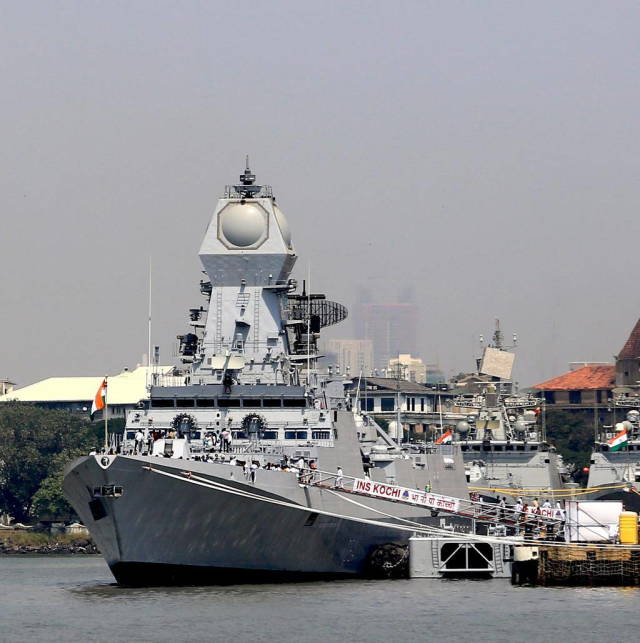
The destroyer Project 15A Maritime Security in Cooperation, as well as many other naval forces in the world, the Indian Navy performs monitoring tasks in national and international waters that are suitable for the minimum possible use.
This is described in great detail in a separate chapter under the heading "Strategy for Shaping a Favorable and Positive Maritime Environment" (Strategy for Shaping a Favorable and Positive Maritime Environment).
The cooperation of politics, diplomacy, police, business and the military should create a prerequisite for the peaceful use of the Indian Ocean and adjacent seas. The necessary framework is formed by the constant presence of naval and air forces with the possibility of rapid intervention, port visits, exercises with foreign navies, as well as the activities of support services, the exchange of ideas during headquarters negotiations with friendly countries.
The Indian Navy is participating bilaterally in exercises with the United States, Oman, Singapore, France, Russia, Great Britain, Sri Lanka, Brazil, Japan, Australia and Indonesia.
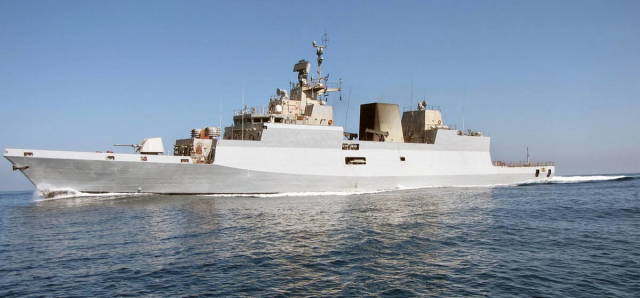
Anti-submarine Corvette Project 28 Further development of the Indian Navy and their capabilities This chapter describes the necessary steps to the conceptual, operational and technological development of the Indian Navy, as well as to preserve and develop their capabilities for conducting a four-dimensional war at sea.
At the same time, the focus is on both the construction of as many platforms as possible and the development of the necessary technologies in their own country.
To this end, it is already considered necessary to build (independently and under license): an aircraft carrier, which, with American support, will receive an electromagnetic catapult, which will make it possible to increase both the take-off weight and the starting speed of aircraft;
- new destroyers (project 15A) and frigates (Project 15B) anti-submarine corvettes (project 28), submarines of the French type "Scorpene" (<span>SCORPENE</span>) at Indian shipyards (under license);
- Coastal patrol ships (Offshore Patrol Vessels, OPV), catamarans for monitoring;
- light combat aircraft. In the field of technology, India would like to "<span>Leap frogging"</span> to outrun the development of other navies in order to be able to manufacture platforms using the latest technologies as soon as possible.
The key ones are satellites for monitoring the sea and communications, high-precision weapons, electromagnetic and laser technologies, new drive systems, unmanned (uninhabited) marine systems, computer security and automation, cybersecurity and nanotechnology.
Given the progress in the United States, China and Russia, it seems that there are doubts about how quickly and to what extent India will be able to close the gap that has formed today on these technological fronts. India has created its own "silicon valley". Scientists and engineers working there work primarily for civilian companies and are hardly inspired by the production of weapons.
The first experience of implementing the Indian maritime strategy, even if the maritime strategy considers the Indian Ocean as a priority area of interest, and the western part of the Pacific region gives the second order, it has yet to be determined that the arms race between Asian states started many years ago and the influence of Chinese policy leave visible traces in India's reasoning about security policy and its Navy.
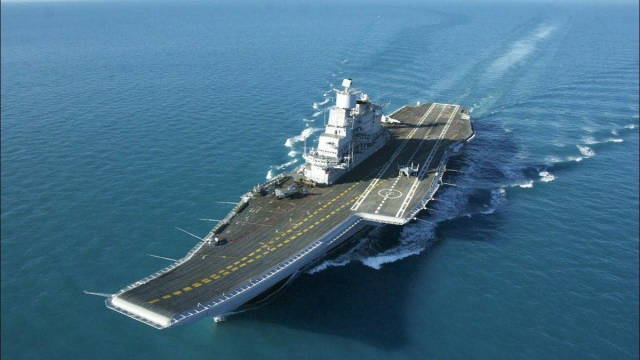
The aircraft carrier Vikramaditi of the Indian Navy, the trade and infrastructure policy of the Chinese "Maritime Silk Road" gives China new partners, and its army new military-based capabilities.
India has nothing to oppose the rapid construction and expansion of the PLA. India's still existing superiority in aircraft-carrying combat groups in 2018 will probably be balanced by the PLA by 2025. The spread of operations of Chinese submarines with nuclear and conventional drive to the Indian Ocean for Indian Navy ships represents a new quality of threats.
The planned purchase of the American anti-submarine aircraft type P-8I "Neptune" is able to strengthen the capabilities of the Indian Navy in anti-submarine warfare. However, it assumes a certain amount of new technologies and their integration into the overall picture of management and the situation.
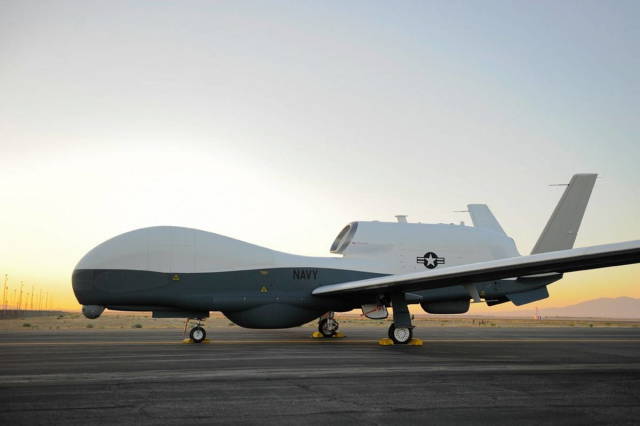
Given the size of the sea zone covered by the aircraft, the question arises why the Indian Navy does not purchase the Triton UAV included in the P-8 kit at the same time.
The combination of an airplane and a UAV allows you to control the sea faster and over a larger area. The drone allows monitoring of the marine area for up to 48 hours, while the aircraft is in the search area for only about eight. Thinking about the future, the Australian Navy has signed a contract with the United States on the procurement of "Triton".
The construction of conventional Scorpin-type submarines under a French license, although it will strengthen the capabilities of the Indian Navy to conduct submarine warfare, but it remains to be seen to what extent these boats will be used to protect carrier formations. Since they are only suitable for other operations in a limited way.
The submarine "Scorpen" at the Indian shipyard Revealed the limits of the capabilities of the Indian Navy in the implementation of the national maritime strategy, as well as the unstoppable growth of the strategic presence of the PLA in the Indian Ocean and adjacent seas sharply raises the question of the future of the security policy of India and the coastal states of the Indian Ocean with China.
Can China be involved in cooperation, and if so, how?
Geostrategic challenges of security policy The Government of India under Prime Minister Narendra MODI has been trying for several years to unite the inhabitants of the Indian Ocean coast into a single security architecture that should ensure freedom, openness and the rule of law.
He welcomed the unification of the Western Pacific region around the Indian Ocean into a single Indo-Pacific region. The free use of its open waters must be protected from outside influence. Modi stated this in his speech in early June 2018 in Singapore to the participants of the Shangri-La Security Policy Dialogue. The Prime Minister made it clear that China's aspirations should be limited. India could become an important component of the formation of such an architecture.
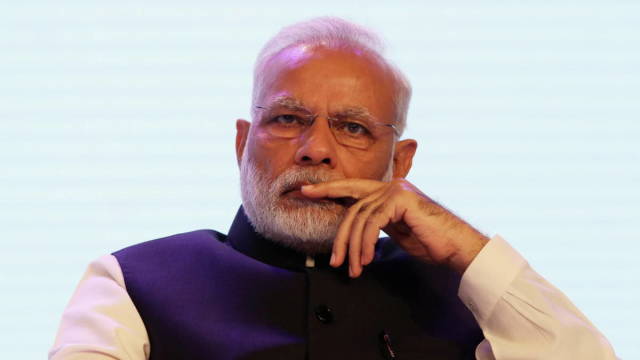
Indian Prime Minister Narendra MODI, why this conscious confrontation at the dialogue forum?
India's population is growing and will overtake China in a few years. Its economy is facing a breakthrough and needs secure maritime links that guarantee trade and exchange of goods around the world. In addition, India supplies oil and natural gas to satisfy its growing energy hunger in the future.
At the same time, India is forced to state that China has built an economic (and not only) port in Hambantota in Sri Lanka. However, due to problems with repayment of loans by Sri Lanka, China has now received the right to use it for 99 years. This is not excluded for the port city of Mombasa in Kenya, if the government does not repay the loans for the railway line through the country in a timely manner. With the use rights in Djibouti and Gwadar (Pakistan), the PLA may in the future receive base points for operations in the Indian Ocean.
Then they will serve not only for the previously declared protection of international sea routes around the Cape of Good Hope, in the Red Sea, the Persian Gulf and the Arabian Sea, around the Strait of Malacca, the Lombok Strait in the South China Sea and further east. India, meanwhile, is forced to generalize the relevant experience of China's long-term strategic thinking, its economy and its armed forces.
In the "One Belt, One Road" initiative (OPOP), as well as in the " Maritime Silk Road ", China is succeeding more and more. Its economic and political influence is expanding on the coastal countries of Africa, as well as on the States of Europe. And - for many, it went unnoticed - China recently published maps that no longer show the borders of countries, but "only" economic corridors. They lead from China through Central Asia to Europe, Africa and finally to South America.
The current global Chinese strategy should be implemented by 2049. This is evidenced by the achievement of the current interim goals strictly according to the plan. Economic overtaking of the United States until the mid-2020s and obtaining superpower status in 2049. Subsequent goals are either competition with the United States, or the only remaining superpower.
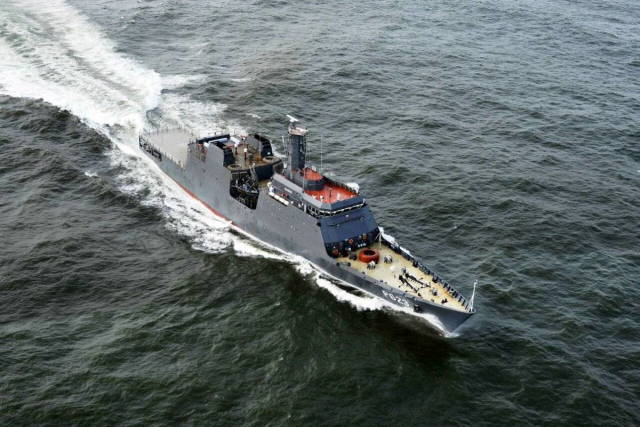
Patrol ship India's security policy requires opposing the bilateral Chinese guile with its own concept for the Indo-Pacific region, which proceeds from the fact that the open sea - the common good of humanity should be accessible and used by everyone.
Freedom, openness and the rule of law should form the foundation of the security architecture between neighbors.
This sounds good to European ears, which, through the OSCE, the Vienna Document and the CFE Treaty, have been able to create a tolerably functioning regional security architecture for decades. Due to the current dislocations, treaty violations and the reassessment of countries in the OSCE region, however, we are unlikely to find grounds to help India in its efforts to form an alliance.
So India is currently experiencing attempts of American blackmail, demanding to stop the import of oil and gas from Iran by November of this year (2018). The US opposes even good relations with Russia, which should benefit India. However, it is doubtful that India would move politically in the direction desired by the US, especially taking into account the statements of the US president before the NATO summit in July 2018.
Most likely, bilateral and multilateral relations will be strengthened in a small circle of like-minded people, which will remain open to other interested parties. This leads to economic and military cooperation.
Militarily, India should invest in new maritime systems. The unstoppable and high pace of military construction in the PLA reinforces the challenge. The Indian projects described above can only be the beginning of development. But their implementation requires the rapid removal of bureaucratic barriers in the Indian procurement system, increased efficiency and a change in outdated political thinking. For the future of rapid maritime thinking and actions at the strategic level, there is still no majority in social and political bodies today. Only President Modi seems ready to bring about these changes.
India's ongoing cooperation with Australia and Indonesia, as well as Vietnam, Singapore, Japan, Great Britain and France, is aimed at an alliance of middle powers in the maritime field. Since these countries, with the exception of Indonesia and Vietnam, already cooperate closely with the US Navy, it is also possible to indirectly represent American interests that are not visible from the outside. The US Navy with its new Indo-Pacific Command, at least in the context of the South China Sea, will avoid mistakes and prevent the expansion of China's influence further east in cooperation with other countries.
The scenario of a new "Great Game" at sea, described more and more often by Chinese and Western experts, is probably in its initial stage. Not confrontation, but integration of China's interests for cooperation is still possible. However, most likely, everything here will depend on the results of the direct economic war between the United States and China.
Based on the materials of the magazine "MarineForum"
